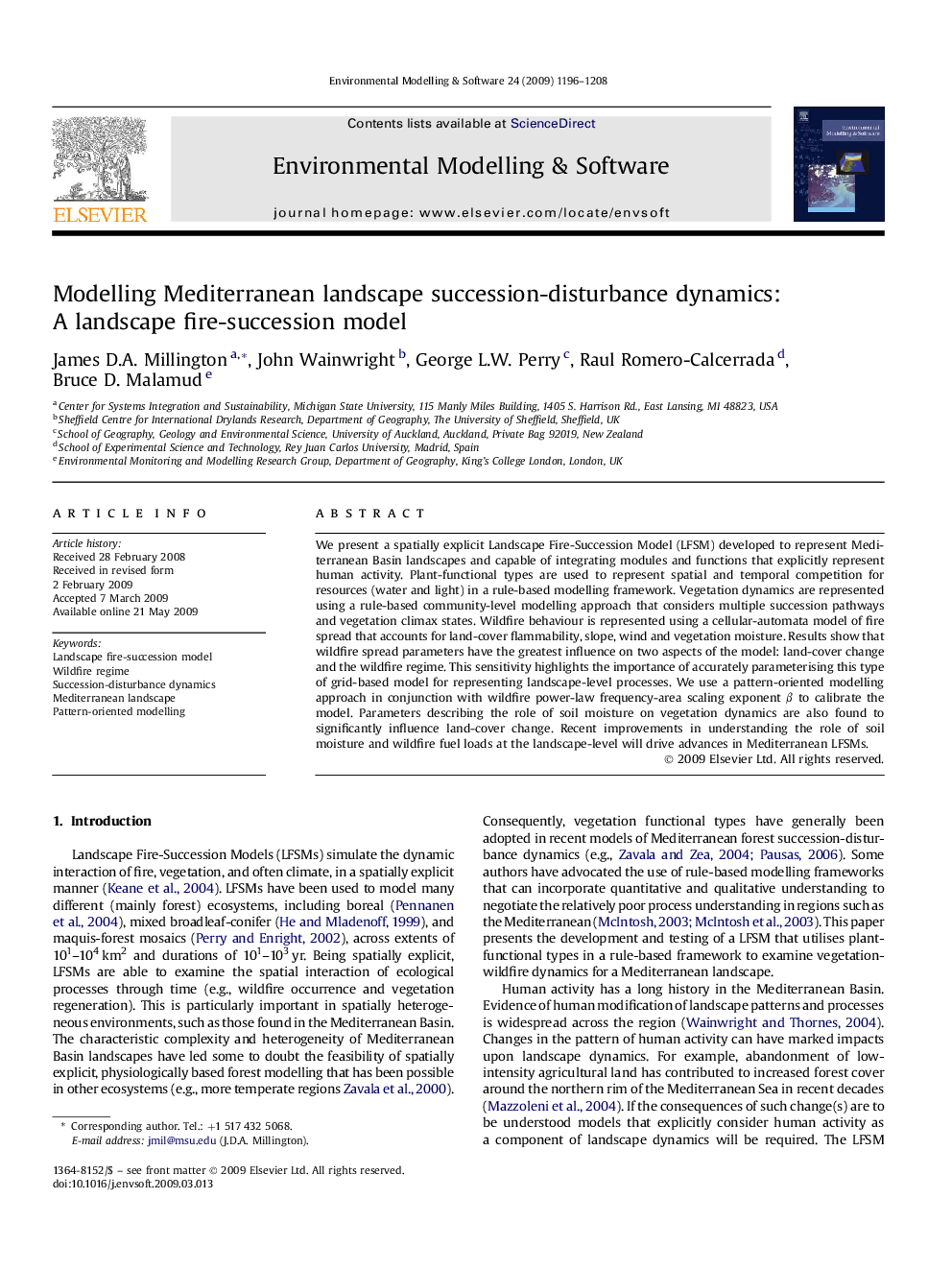| Article ID | Journal | Published Year | Pages | File Type |
|---|---|---|---|---|
| 570018 | Environmental Modelling & Software | 2009 | 13 Pages |
We present a spatially explicit Landscape Fire-Succession Model (LFSM) developed to represent Mediterranean Basin landscapes and capable of integrating modules and functions that explicitly represent human activity. Plant-functional types are used to represent spatial and temporal competition for resources (water and light) in a rule-based modelling framework. Vegetation dynamics are represented using a rule-based community-level modelling approach that considers multiple succession pathways and vegetation climax states. Wildfire behaviour is represented using a cellular-automata model of fire spread that accounts for land-cover flammability, slope, wind and vegetation moisture. Results show that wildfire spread parameters have the greatest influence on two aspects of the model: land-cover change and the wildfire regime. This sensitivity highlights the importance of accurately parameterising this type of grid-based model for representing landscape-level processes. We use a pattern-oriented modelling approach in conjunction with wildfire power-law frequency-area scaling exponent β to calibrate the model. Parameters describing the role of soil moisture on vegetation dynamics are also found to significantly influence land-cover change. Recent improvements in understanding the role of soil moisture and wildfire fuel loads at the landscape-level will drive advances in Mediterranean LFSMs.
